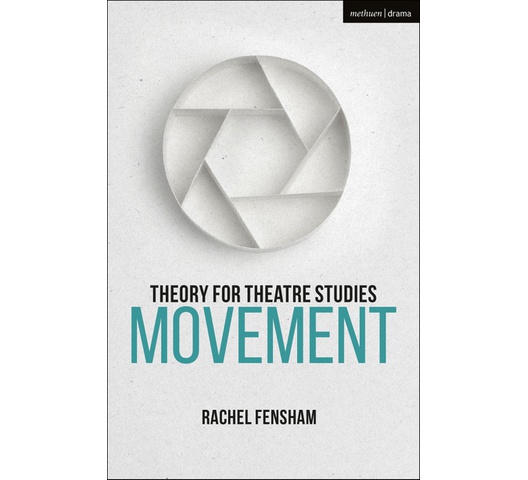
Theory for Theatre Studies: Movement
by Rachel Fensham, Susan Bennett, Kim Solga
This is an eBook that you can download electronically.
How do we define movement in performance? Who or what is being moved and how? And which movements are felt, observed, or studied, in theatre?
Part of the Theory for Theatre Studies series which introduces core theoretical concepts that underpin the discipline, Movement provides the first overview of relevant critical theory for students and researchers in theatre and performance studies. Exploring areas such as vitality, plasticity, gesture, effort and rhythm, it opens up the study of theatrical production, live art, and intercultural performance to socio-political conceptions of movement as both practice and concept. It covers movement training systems and considers how they have been utilized in key works of the 20th and 21st centuries. The final section traces the convergence of movement in theatre with other media and digital technologies.
A wide range of in-depth case studies helps to equip readers to explore new methodologies and approaches to movement as a performance concept. These include analysis of Satoshi Miyagi's production of Sophocles' Antigone (2017), Thomas Ostermeier's production of Ibsen's Hedda Gabler (2008), the Berliner Ensemble's Mother Courage (1949), The Constant Prince (1965) performed by Ryzsard Cieslak, and the National Theatre's production of War Horse (2007). The final section considers a suite of concepts that shape postdramatic and intermedial theatre from China, Germany-Bangladesh, Australia, the United States, and United Kingdom. The volume is supported by further online resources including video material, questions, and exercises.
SKU: 9781350026384
Format: EPUB
Part of the Theory for Theatre Studies series which introduces core theoretical concepts that underpin the discipline, Movement provides the first overview of relevant critical theory for students and researchers in theatre and performance studies. Exploring areas such as vitality, plasticity, gesture, effort and rhythm, it opens up the study of theatrical production, live art, and intercultural performance to socio-political conceptions of movement as both practice and concept. It covers movement training systems and considers how they have been utilized in key works of the 20th and 21st centuries. The final section traces the convergence of movement in theatre with other media and digital technologies.
A wide range of in-depth case studies helps to equip readers to explore new methodologies and approaches to movement as a performance concept. These include analysis of Satoshi Miyagi's production of Sophocles' Antigone (2017), Thomas Ostermeier's production of Ibsen's Hedda Gabler (2008), the Berliner Ensemble's Mother Courage (1949), The Constant Prince (1965) performed by Ryzsard Cieslak, and the National Theatre's production of War Horse (2007). The final section considers a suite of concepts that shape postdramatic and intermedial theatre from China, Germany-Bangladesh, Australia, the United States, and United Kingdom. The volume is supported by further online resources including video material, questions, and exercises.
KES 2,955

International delivery
Free click & collect
When you buy an ebook from TBC, you will be given a code to download your
purchase from our ebook partner Snapplify. After you have redeemed the code and
associated it with a Snapplify account, you'll need to download the Snapplify Reader
to read your ebooks. The free Snapplify Reader app works across iOS, Android,
Chrome OS, Windows and macOS; on tablets and mobile devices, as well as on
desktop PCs and Apple Macs.
You're currently browsing Text Book Centre's digital books site. To browse our range of physical books as well as a wide selection of stationery, art supplies, electronics and more, visit our main site at textbookcentre.com!
Reviews
This product does not have any reviews yet.
Add your review
